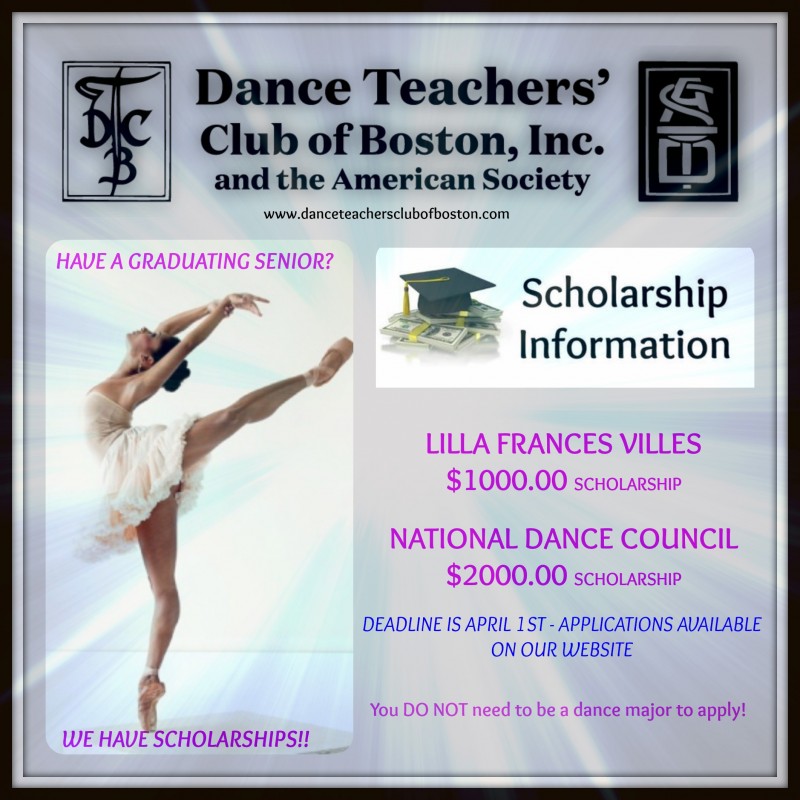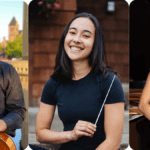I remember the exact moment the dream truly took hold. I was maybe twelve, watching a professional company perform, and something clicked inside me. It wasn’t just about moving; it was about telling a story, painting emotions with every leap and turn. But as I grew, and my training intensified, so did the whispers of reality: dance, especially professional-level training, costs a lot of money. My family wasn’t rich. In fact, we were quite ordinary, and the idea of funding intensive summer programs, workshops, and eventually, a college degree in dance, felt like an insurmountable mountain. That’s when I first heard the magic words: dance scholarships.
To be honest, at first, I didn’t really understand what dance scholarships were. I imagined some secret society of benefactors handing out bags of cash to talented kids. The reality, I soon learned, was much more grounded, but no less life-changing. A dance scholarship isn’t just about receiving money; it’s an investment in your potential, a vote of confidence from an institution or an individual who believes in your artistic future. For me, it became the key that unlocked doors I never thought I’d be able to open.
My own adventure into finding these scholarships was a winding road, full of hopeful auditions, crushing rejections, and exhilarating acceptances. It taught me perseverance, the importance of preparation, and perhaps most importantly, to never give up on a dream just because the path seems unclear. I want to share some of what I learned, hoping it makes your own journey a little less daunting.
First off, let’s talk about what these scholarships actually are. They come in many shapes and sizes. You might think of a full-ride scholarship, covering everything from tuition to living expenses, and while those exist, they’re rare and incredibly competitive. More often, you’ll find partial scholarships, which might cover a percentage of tuition, or perhaps a specific program’s fees, like a summer intensive. Don’t dismiss these smaller amounts! A few hundred dollars here, a thousand there, can add up significantly and make a huge difference in affording your training.
There are different types too. Many are merit-based, meaning they’re awarded because of your talent, skill, and potential as a dancer. This is often determined through an audition process. Then there are need-based scholarships, which are given to students who demonstrate financial hardship. Sometimes, a scholarship might combine both, looking at your talent and your financial situation. Some are specifically for certain dance genres – ballet scholarships, contemporary dance scholarships, jazz, hip-hop, you name it. Others might be for students pursuing a specific academic track alongside their dance studies, or even for those from particular geographical regions or backgrounds. The variety is vast, which means there’s likely a scholarship out there for almost every kind of dancer.
So, where do you even begin looking for dance scholarships? This was my first big hurdle. It felt like searching for a needle in a haystack. My dance teacher was my first guide. She had a wealth of knowledge about local opportunities and even some national ones. So, my first piece of advice: talk to your current dance teachers and mentors. They’ve been in the dance world for a while and often know about specific programs or organizations that offer aid.
Beyond that, I spent countless hours online. University dance departments are a prime place to look. If you’re considering higher education in dance, every university’s admissions and financial aid pages will have information about their own scholarship programs. Many dance conservatories and professional training programs also offer scholarships directly. Don’t just look at the big, famous schools; smaller, equally excellent programs often have scholarship opportunities that are less competitive simply because fewer people apply for them.
Then there are independent organizations and foundations. These often have specific criteria. Some might support young artists in general, others might focus solely on dance. A simple Google search for "dance scholarships" or "financial aid for dancers" will yield a lot of results. Be patient and sift through them. Websites like Scholarship.com or Fastweb sometimes list arts scholarships, though you’ll have to filter through a lot of general ones to find the dance-specific ones. My mom even found a local women’s club that offered a small scholarship for students pursuing arts education – it wasn’t huge, but every bit helped.
Once you’ve found some potential scholarships, the next step is the application itself. This is where many hopeful dancers get overwhelmed. It’s not just about dancing; it’s about presenting yourself comprehensively. Most applications will ask for a combination of things:
- An application form: Usually straightforward contact information and basic questions.
- Dance Résumé/CV: This is different from a regular job résumé. It lists your dance training (teachers, studios, years), performance experience (roles, companies), master classes, awards, and any special skills (e.g., pointe work, partnering, specific aerial skills). Keep it concise and professional.
- Headshot and Dance Photos: A good quality headshot that looks like you, and a few dance photos that showcase your lines, flexibility, and artistry. They don’t need to be overly elaborate, but clear and professional.
- Letters of Recommendation: These are crucial. Ask teachers, choreographers, or mentors who know your dancing and your work ethic well. Ask them early, and give them a clear deadline. Provide them with your résumé and a brief overview of what you’re applying for, so they can tailor their letter. I learned the hard way that a generic letter isn’t as impactful as one that speaks specifically to your strengths.
- Academic Transcripts: Especially for college-level scholarships, your grades matter. They want to see that you’re a well-rounded individual capable of handling academic rigor alongside your dance commitments.
- Essays or Personal Statements: This is your chance to let your personality shine and tell your story beyond your technique. Why do you dance? What are your aspirations? How will this scholarship help you achieve your goals? Be honest, be passionate, and proofread meticulously. My essay for one particular scholarship focused on how dance helped me overcome shyness, and I think that personal touch resonated.
- Video Audition: Many scholarships, especially for distant programs, require a video submission. This usually involves specific combinations (ballet barre, center work, contemporary phrases) and often a solo piece choreographed by you or a teacher. Make sure the lighting is good, the sound is clear, and the camera is steady. Show your best work, but also show your personality.
The audition itself, if required, is often the most nerve-wracking part. My first few scholarship auditions were a blur of sweaty palms and frantic self-doubt. But with each one, I learned something new. Preparation is key. Know what style of dance they’ll be asking for. Practice common combinations and variations. If they ask for a solo, make sure it’s polished and showcases your strengths.
On the day of the audition, arrive early. Warm up thoroughly. Dress professionally and appropriately for the style of dance. Be polite to everyone, from the reception staff to the artistic director. They are not just watching your dancing; they are watching how you carry yourself, how you interact, and your overall attitude. Be confident, but not arrogant. Take corrections well. Smile, make eye contact, and let your passion for dance be evident. Remember, they want to see you – your unique artistry and potential. Don’t try to be someone else. I remember one audition where I felt completely out of my depth, but I decided to just enjoy the movement, and paradoxically, that’s when I felt most like myself, and I ended up getting a partial scholarship from that very program.
It’s also important to understand that rejection is a part of the process. I received far more "no"s than "yes"s. Each rejection stung, but it also taught me resilience. It forced me to re-evaluate, to train harder, to refine my application materials. Sometimes, it’s not about your talent, but about what they’re looking for that particular year, or perhaps a specific body type or skill set they need. Don’t take it personally. Use it as fuel to improve.
What if you don’t get a dance scholarship right away? Don’t despair. There are other avenues. Consider local community grants or art council funding. Many towns and cities have small pots of money for young artists. Look into work-study programs at studios or schools, where you can exchange administrative work or cleaning duties for reduced tuition. Some dancers even crowdfund or organize local performances to raise money for their training. The dance community can be incredibly supportive, so don’t be afraid to ask for help or ideas.
And once you do get a scholarship, the journey isn’t over. It’s just beginning. A scholarship comes with responsibilities. You are expected to maintain your academic standing if it’s a school scholarship. You’re expected to work hard, be a positive influence, and represent the institution or donor well. Make the most of every opportunity the scholarship provides. Attend every class, absorb every piece of feedback, network with your peers and teachers, and push yourself beyond your perceived limits. This isn’t just about getting free training; it’s about making the most of a chance that others might not get.
My experience with dance scholarships truly changed the trajectory of my life. It wasn’t just about affording my dance education; it was about the validation, the belief that someone saw potential in me, and the freedom to pursue my passion without the constant weight of financial worry. It taught me invaluable lessons about self-worth, persistence, and the power of asking for what you need.
For any young dancer reading this, dreaming of professional training but feeling limited by finances, please know that dance scholarships are real, and they are attainable. It takes work, it takes courage, and it takes a lot of applications, but the rewards are immeasurable. Start early, do your research, prepare diligently, and most importantly, never stop dancing. Let your passion be your guide, and let your unique artistry shine through. The path might not always be straight, but with determination, you can absolutely find your way to the stage you’re meant to be on. Your dream is worth fighting for.



